- Where is Nepal located?
- FLag of Nepal
- Geography
- People of Nepal
- Nepal – A spiritual destination for Hindus and Buddhists
- History of Nepal
- Why do tourists visit Nepal?
- How to get a Nepalese Visa?
- How to reach Nepal by air?
- How to reach Nepal by land?
- Neighboring Countries
- Interesting Trivia about Nepal
- Basic Dos and Don’ts while traveling in Nepal
- Nepal – Your next travel destination?
Once known as Shangri La, a hidden kingdom in the Himalayas, Nepal has emerged as one of the chief adventure destinations in the world. If you are a mountain person you will surely have visited or heard about Nepal. It is the country of the great mountains and brave Gurkha warriors.
A tiny landlocked country in South Asia, Nepal is home to some of the highest mountains, including Mount Everest (the highest of them all), on our planet. The country’s trekking trails weaving past some of the highest mountains in the world are some of the best walking and hiking destinations in the world. Each year hundreds of mountaineers visit Nepal to scale its many mountains ranging from over 5000 meters to 8000 meters.
But there’s more to Nepal than the mountains. The country has a rich cultural heritage that dates back to the time of Lord Buddha and earlier. The art and architecture found in Kathmandu Valley is one of the finest in the world.
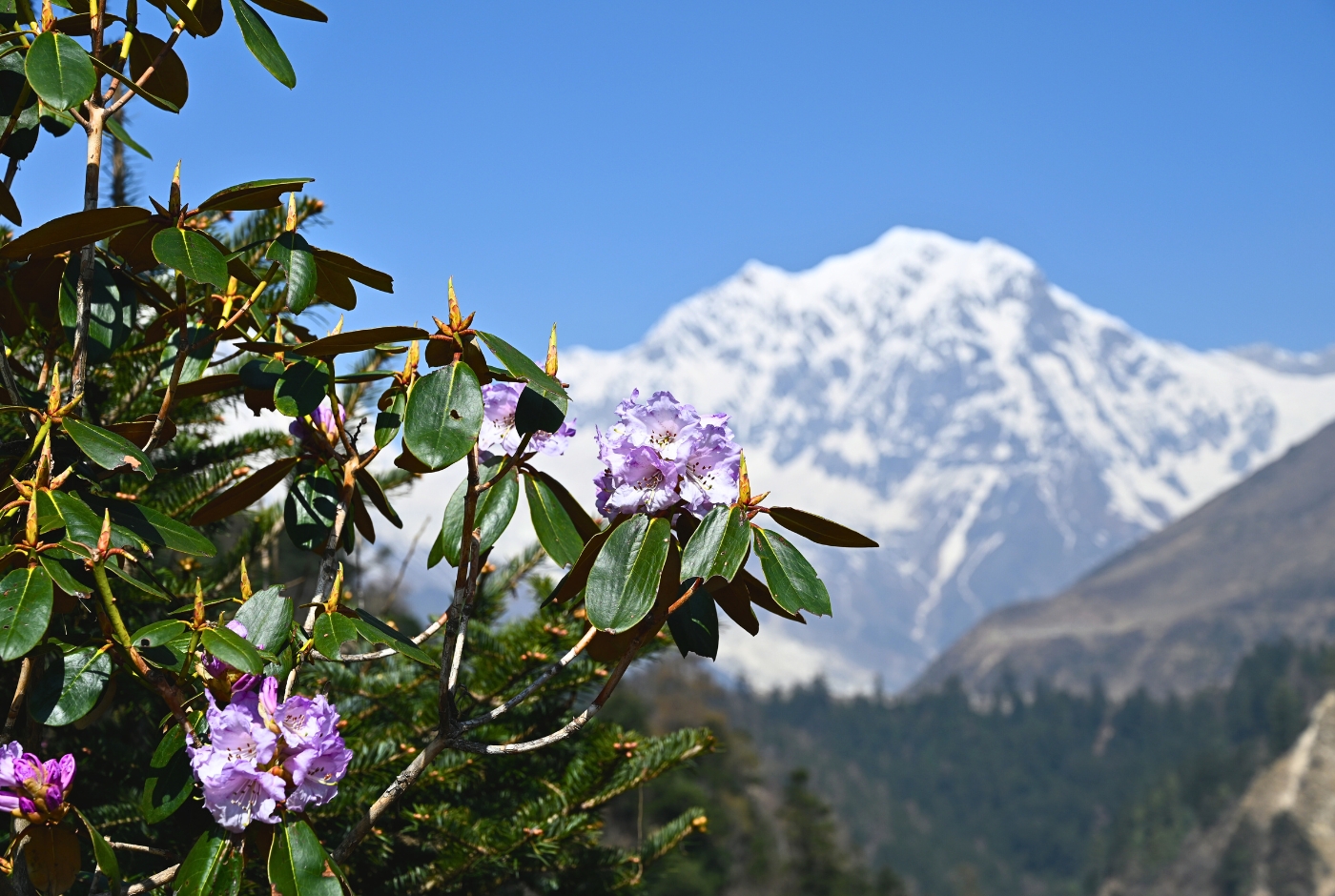
From east to west there are 129 languages spoken in Nepal. People from 123 ethnic groups inhabit the mountains, valleys, hills, and plains of this vibrant country. Each of these groups has its own language and culture.
The country has been a spiritual hub for Hindu as well as Buddhist pilgrims for hundreds of years. The pilgrimage sites of Muktinath, Lumbini, Pashupatinath, Boudhanath, etc. draws devout Hindu and Buddhist pilgrims from all over the world.
Travel and adventure bibles like Lonely Planet and National Geographic Adventure feature Nepal time and again in their ‘must-visit’ list of adventure destinations. The diversity in landscape, culture and climate has made this tiny Himalayan nation a favorite holiday destination among travelers.
If you are ready to embark on a journey of discovery of this wonderful destination read on.
Where is Nepal located?
If you look in the globe or world map, Nepal is that tiny rectangular piece of land wedged between the two Asian giants, China and India. The country is located in South Asia, at a latitude of 28° North and longitude of 24° East. It lies in the temperate zone towards the north of Tropic of Cancer. It's situated primarily in the Himalayas, but also includes parts of the Indo-Gangetic Plain.
- Nepal Geologically Location: Nepal is situated in the Himalayas, a mountain range that also includes Mount Everest, the world's highest peak.
- Borders: It shares borders with the Tibet Autonomous Region of China to the north and with India to the south, east, and west.
- Geographic Features: Nepal's geography includes fertile plains, subalpine forested hills, and eight of the world's ten tallest mountains.
- Nepal Exact Coordinates: Nepal's approximate coordinates are 28°N and 84°E.
FLag of Nepal
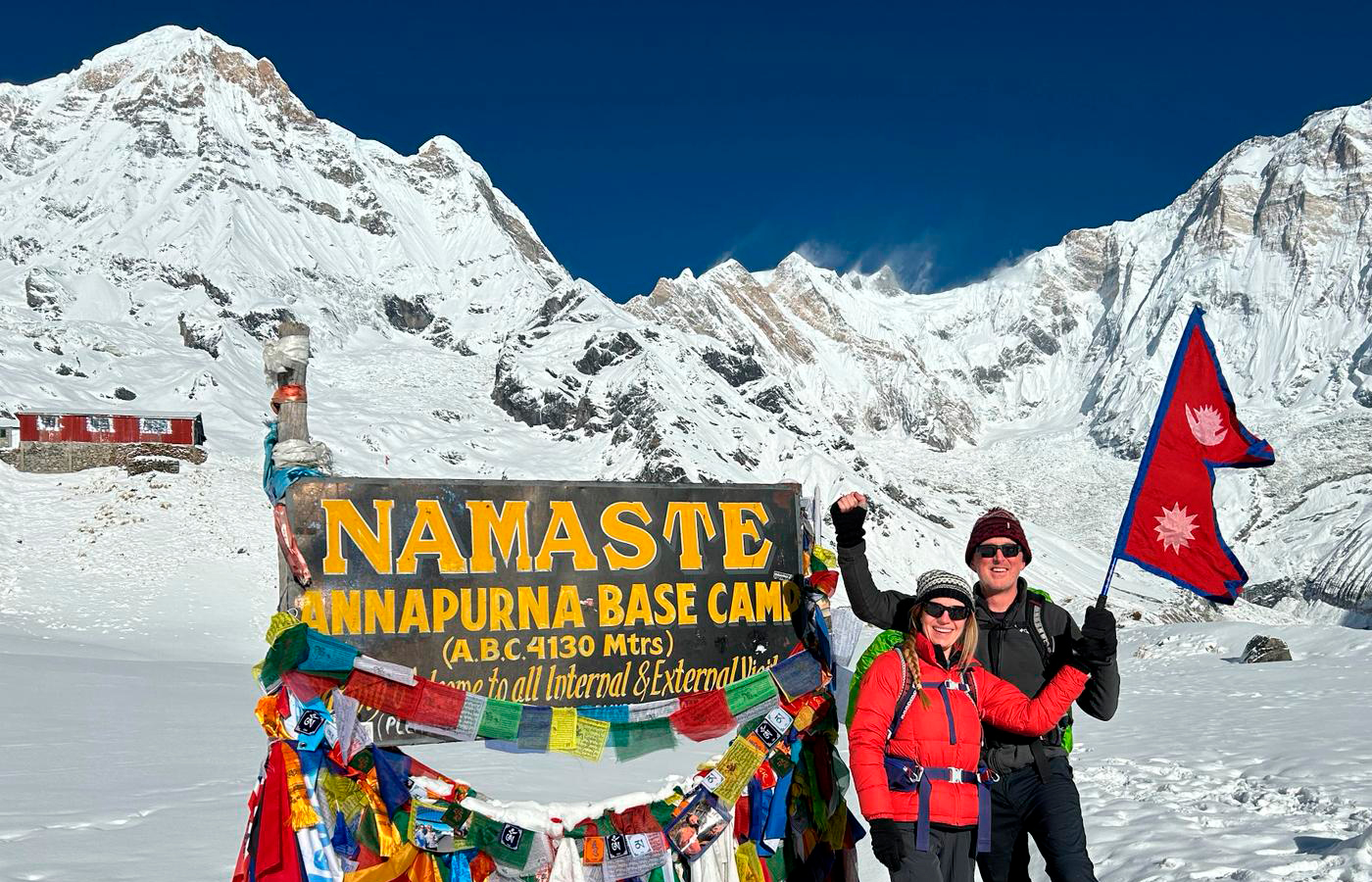
The flag of Nepal is non-quadrilateral in shape, with two triangles that form an irregular pentagon. It has a crimson red background and a dark blue border.
What each color and shape of Nepal flag represents?
- Red: The color of the rhododendron, Nepal's national flower, and a symbol of victory in war
- Blue: The color of peace and harmony
- Sun: A white, stylized sun with 12 rays in the bottom section of the flag, representing hope and prosperity
- Moon: A white moon emitting eight rays in the upper segment of the flag, with a crescent attached below, representing hope and prosperity
- Triangles: Represent the Himalaya Mountains and the two major religions, Hinduism and Buddhism
History of Nepal Flag
- The flag was adopted on December 16, 1962
- The original design was by Prithvi Narayan Shah, and the modern design was by Shankar Nath Rimal
- Before 1962, the flag's sun and moon emblems had human faces, which were removed to modernize the flag
The flag of Nepal is unique because it is not quadrilateral, making it the only nonrectangular national flag in the world. It is both the state flag and the civil flag of Nepal.
Geography
From east to west, Nepal stretches to 800km and from north to south 150 to 200 km. it has a total land area of 147,181 square kilometers. The country is divided into three geographical zones – Himalayan, Mid-Hill and Terai. Nepal’s highest point is the summit of Mount Everest at 8848m and its lowest point is Kechana Kalan in Jhapa at 60m.
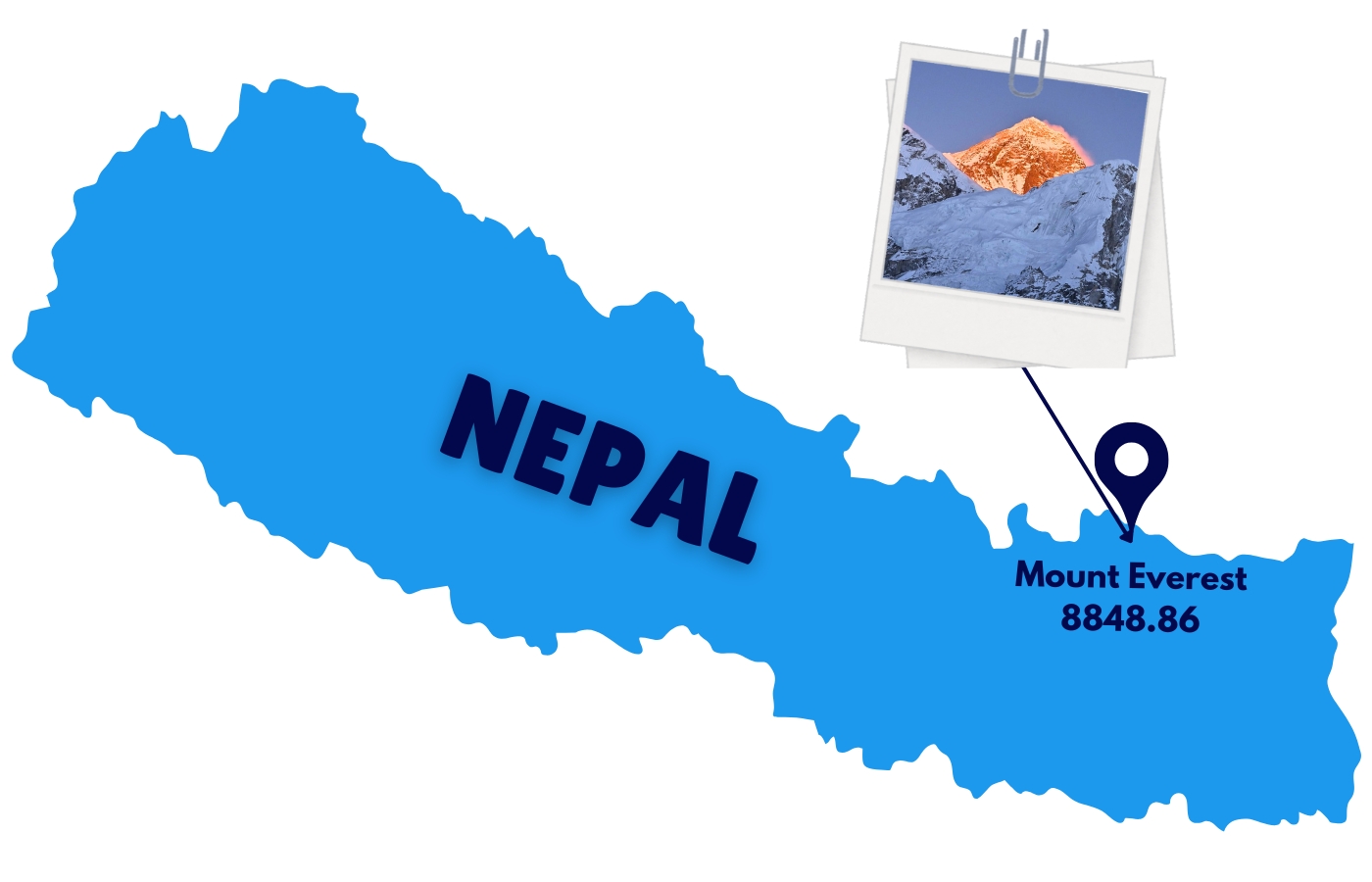
The Terai belt which occupies 17 percent of the nation’s total surface area is abundantly fertile and is a rich haven for wildlife. The altitude in this region varies from 60m to 305m. The Terai region is home to endangered wildlife like the one-horned rhino and Royal Bengal tiger.
The mid-hill region occupies 43 percent of the total land area. It includes deep river valleys and green hills rising to an altitude of 3000. The scenic Kathmandu and Pokhara valleys are part of the mid-hill region.
The Himalayan region begins from 3000m and encompasses 8 of the 14 highest mountains in the world – Mount Everest, Kanchenjunga, Lhotse, Cho Oyu, Makalu, Dhaulagiri, Annapurna and Manaslu. The arid Himalayan desert of Upper Mustang, Dolpo and some parts of Tsum Valley which lie close to the Tibetan plateau also come under this region.
List of Top Highest Mountains in Nepal
- Mount Everest (8,848.86 meters)- The Roof of the World
- Kanchenjunga (8,586 meters)- The World's Third Highest Peak
- Lhotse (8,516 meters)- The Fourth Highest Peak
- Makalu (8,481 meters)- The Fifth Highest Challenge
- Cho Oyu (8,188 meters)- The Turquoise Goddess
- Dhaulagiri I (8,167 meters)- The White Mountain
- Mount Manaslu (8,163 meters)- The Mountain of the Spirit
Get detail information of Highest mountain peaks in Nepal, here
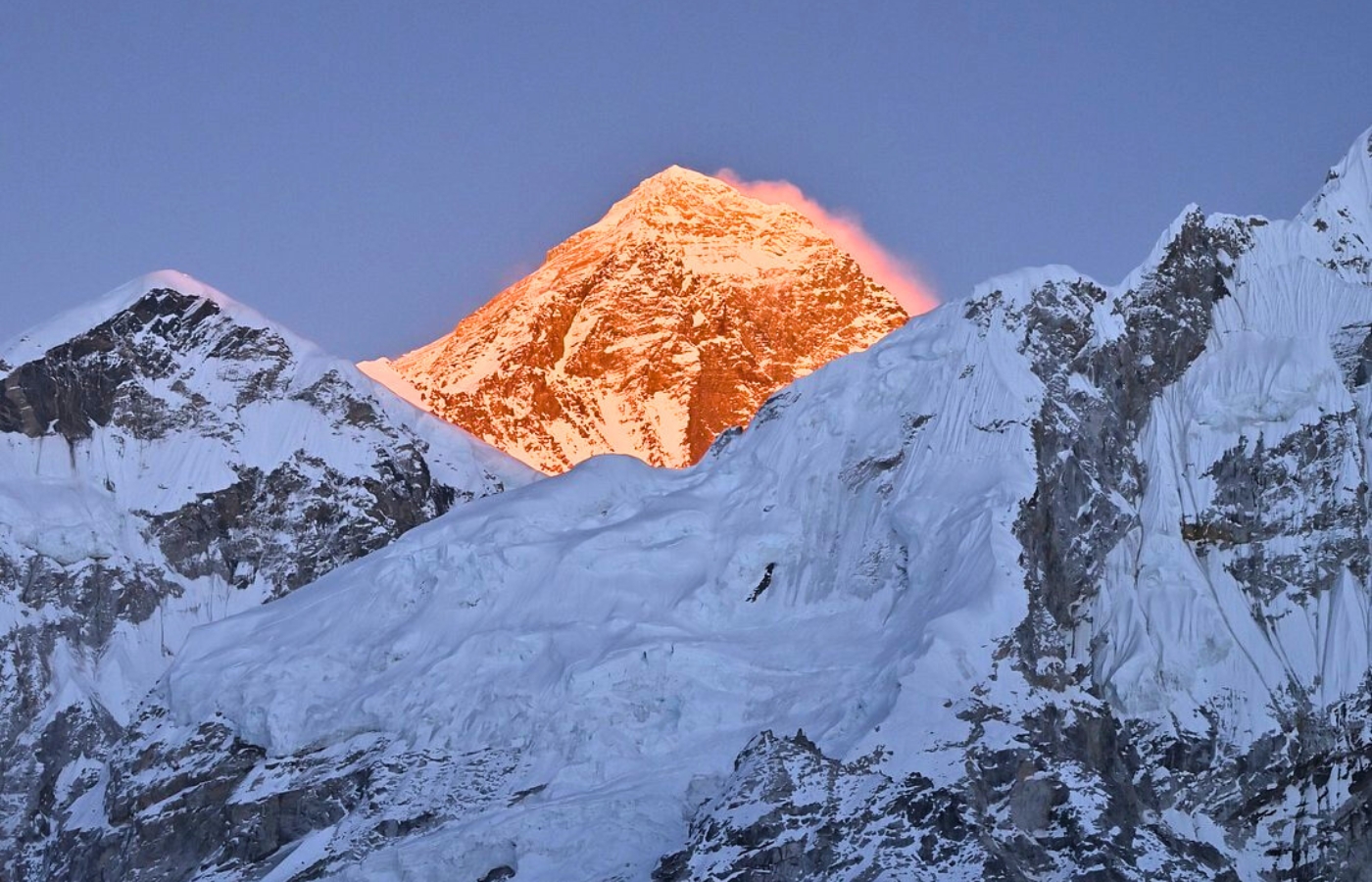
Rivers in Nepal
The major rivers of Nepal include Koshi, Kali Gandaki, Karnali, Trishuli, Marshyangdi, Seti, Narayani, Bagmati, Rapti, Mechi and Kankai. The Kali Gandaki river gorge which lies in the Annapurna Region is the deepest gorge in the world.
Koshi River (Saptakoshi): This river, which flows through both Nepal and India, is famous for its seven major tributaries and is known as the Saptakoshi for this reason. Some of its tributaries, like the Arun, Bhote Kosi, and Sun Kosi, originate in the Tibetan region of China.
Gandaki River (Narayani): Also known as the Narayani and Gandak, this river is a major tributary of the Ganges in India. In Nepal, it's known as Kali Gandaki (or Gandaki) in its upper reaches and Narayani River in the Terai plains.
Karnali River: This is another major river in Nepal, known for its role in shaping the landscape and providing water resources.
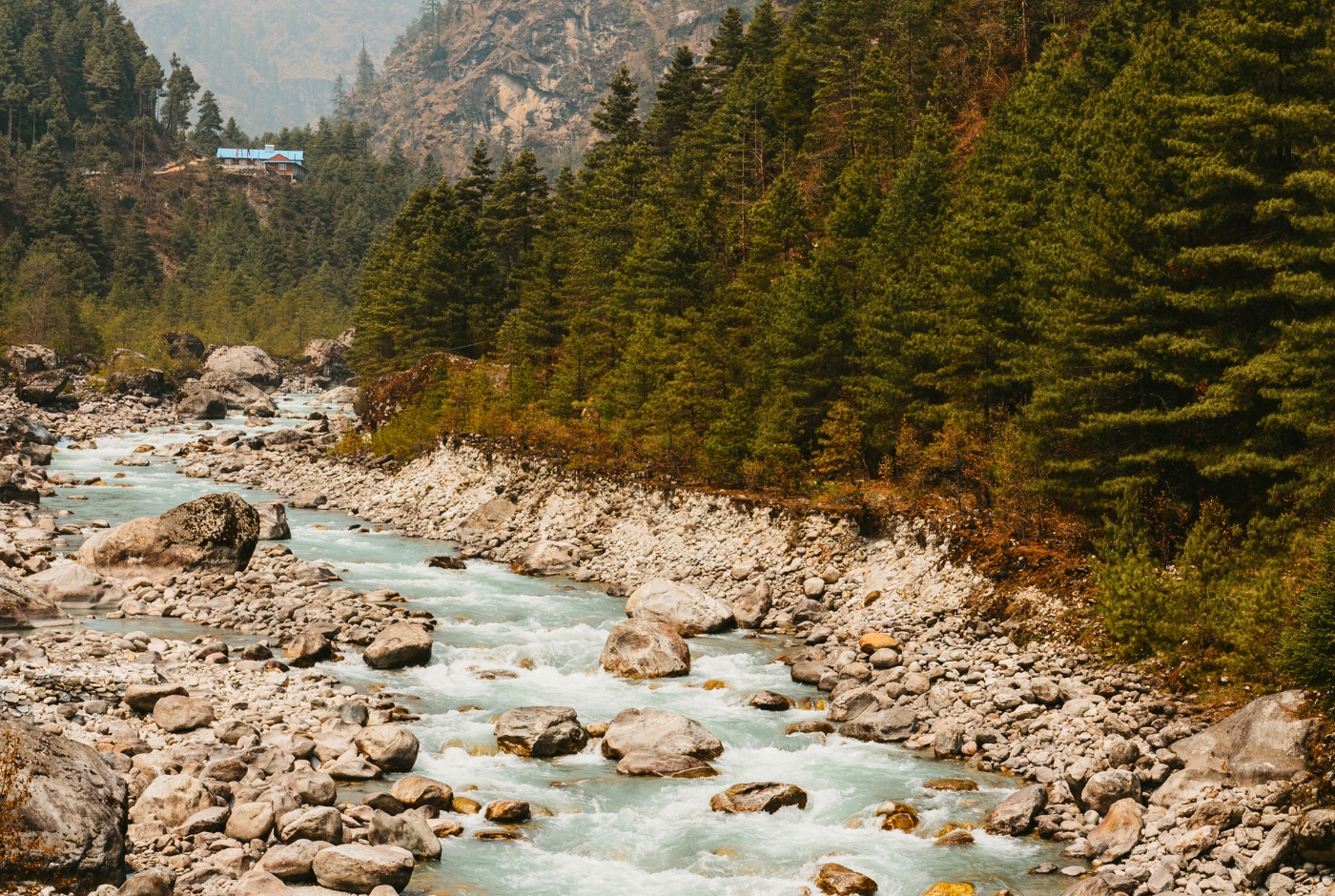
Other Notable Rivers:
Bagmati River: This river flows through the Kathmandu Valley, separating Kathmandu and Patan, and is considered a holy river by Hindus and Buddhists.
Sun Kosi: This river is a popular destination for whitewater rafting and kayaking, known for its picturesque landscapes.
Tamur River: This river flows under the shadows of Mount Kanchenjunga and is a popular spot for kayaking.
Seti Gandaki: A river in western Nepal, considered holy and known for its white waters.
Ramsar sites in Nepal
There are 10 designated Ramsar sites in Nepal. Ramsar Sites are wetland sites or lakes that are nesting sites of endangered birds, marine creatures and waterfowls. These sites are of international importance and are protected. One of the highest Ramsar sites in the world is the six interconnected Gokyo Lakes. The lakes, located at a height of 4700 to 5000 meters in the Everest Region is the highest freshwater lake system in the world.
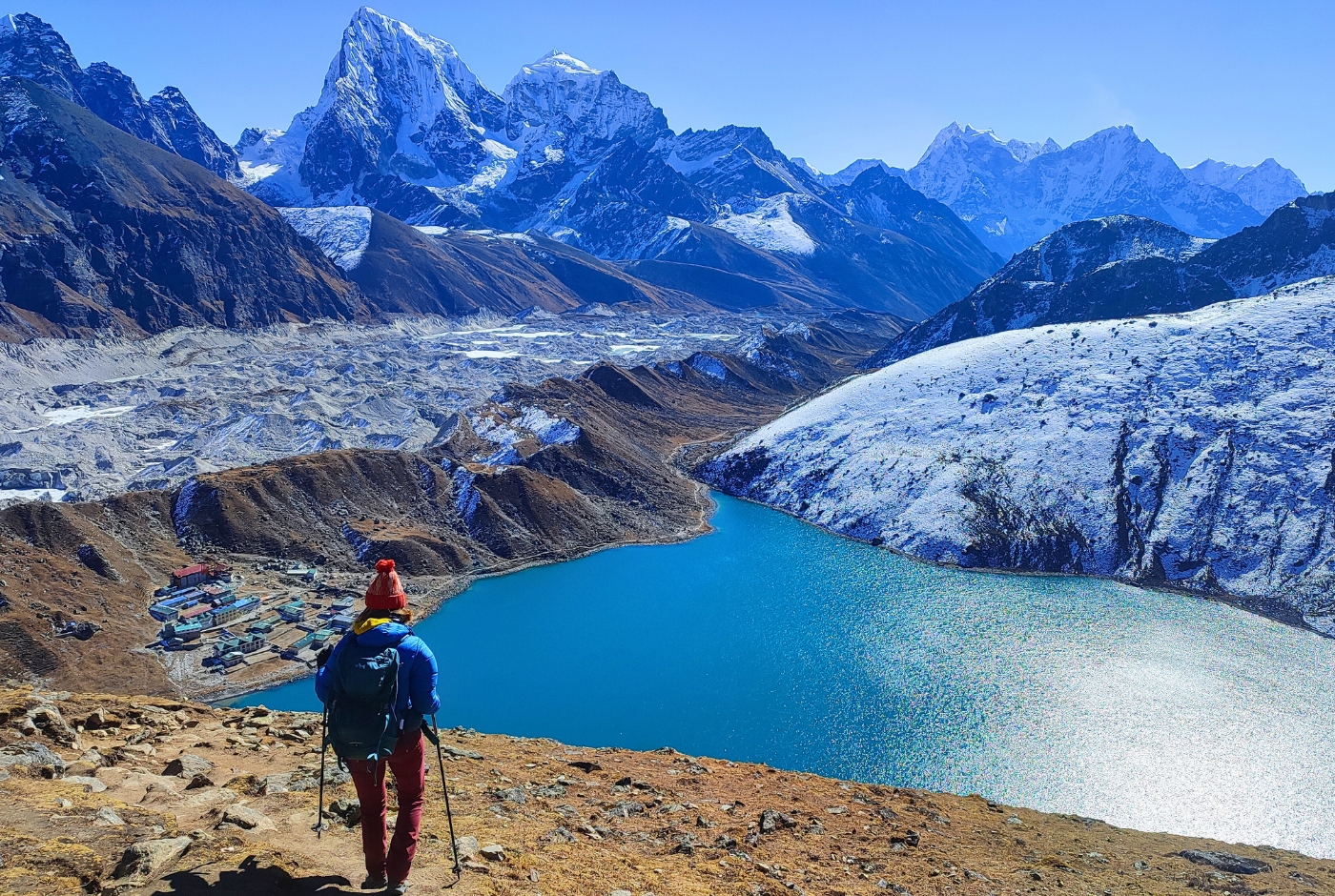
List of Ramsar sites in Nepal
- Koshi Tappu Wildlife Reserve
- Beeshazari and Associated Lakes
- Ghodaghodi Lake Area
- Jagadishpur Reservoir
- Gosaikunda Wetland
- Gokyo Wetland Series
- Rara Lake
- Phoksundo Wetland (Shey Phoksundo National Park)
- Maipokharai
- Lake Cluster of Pokhara
People of Nepal
Mountains, nature and the people – these are the three major magnets that pull visitors towards Nepal. Described as warm, hospitable, friendly, kind and simple the Nepalese people have been winning of hearts of tourists since Nepal opened its doors to tourists in the mid-fifties. Many foreign visitors have forged bonds with the Nepalese and have made Nepal their home.
From the Himalayas to the Terai, the Nepalese communities may have different religions and cultures but they believe in the common idea of treating guests as gods. Their doors as well as their hearts are always open for a guest.
According to the latest (2020) UN data, the total population of Nepal is 29, 263, 905. There are 126 ethnic groups and castes in Nepal. Each of these communities has its own distinct language, customs and traditions. While majority of the population follow Hindu religion, a large number are Buddhists and Animists. A sizeable population follow Islam and Christianity.
The Khas Chettris and hill Brahmins populate the western and far-western region of Nepal. Magars, Gurungs and Tamangs inhabit the middle hills of central Nepal. In the eastern hills live the Kitatis- Rai, Limbu, Sunuwar and Yakkha. The brave Gurkha soldiers, who have earned accolades for their bravery and valor come from the middle-hills.
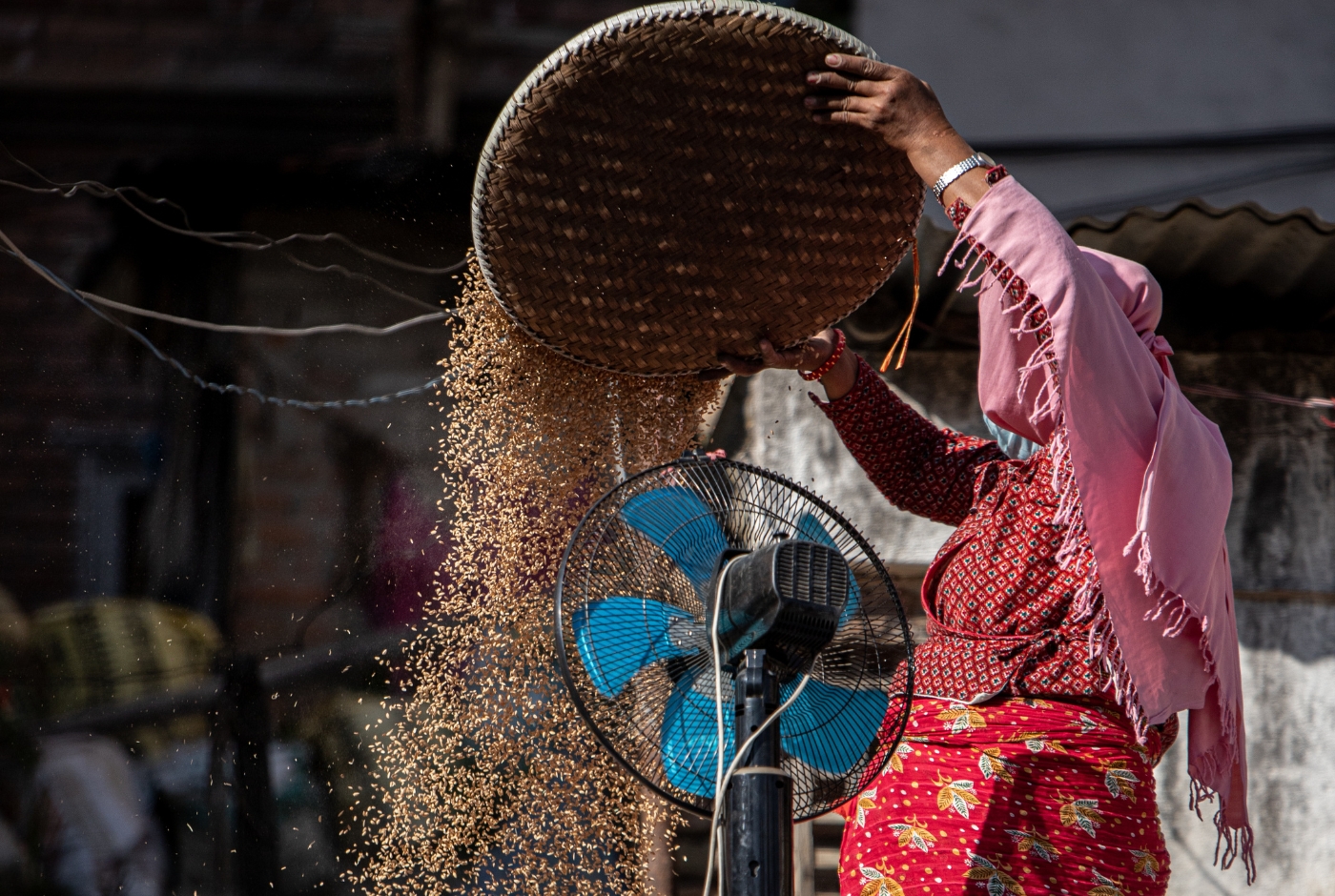
The Kathmandu Valley and the surrounding areas are home to the Newars. Sherpas, the hardy mountain tribe live in the high reaches of Solu Khumbu or Everest Region. The enterprising Thakkalis inhabit the Thak Khola region in the Annapurna zone. The Damai, Kami and Sunar communities also live in the middle-hill region.
The mountainous region of Dolpa is inhabited by Dolpalis, who trace their ancestry to Tibetan tribes. Likewise, the Mustanges, Mananges, Bhotias, and Tsombas living in the Trans Himalayan region of Nepal close to Tibet, are descendants of Tibetan settlers who migrated from Tibetan highland.
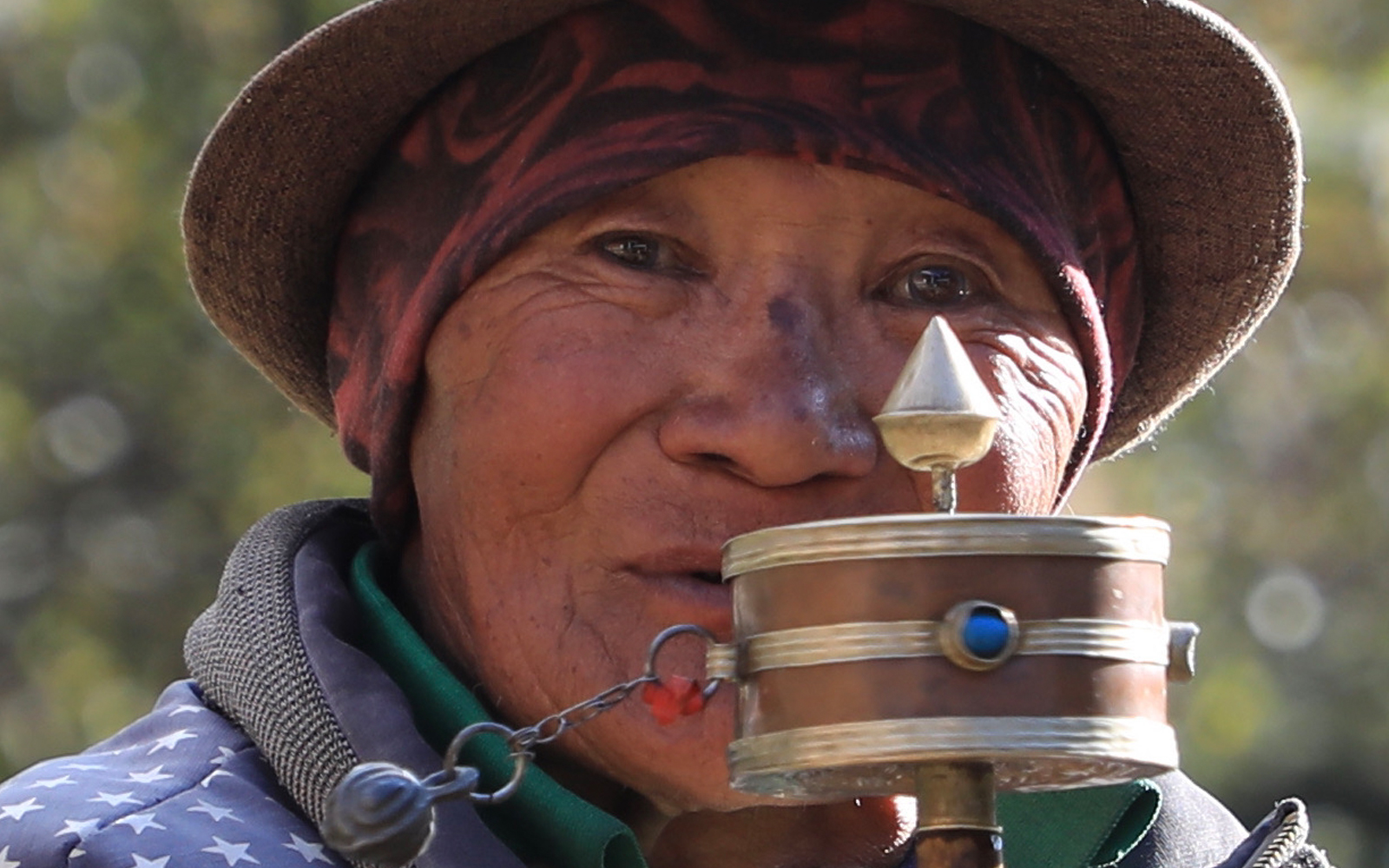
In the Terai region, the Mithilas are the prominent ethnic group. Tharu, Raute, Cheppang, Meche and Dhimal, are some of the indigenous communities with their own distinct culture.
The Rautes are the last of the nomadic groups existing in Nepal. This community set up temporary camps in jungles and travel from place to place in search of food. They are hunters food gatherers and don’t own any property. The government is trying to rehabilitate them by offering them houses and free education, but there have been few takers. The Rautes seem reluctant to let go of their traditional nomadic lifestyle.
Nepal – A spiritual destination for Hindus and Buddhists
Nepal was the last of the Hindu Kingdom. The Shah Kings were known as avatars of Lord Vishnu and worshipped by the people. The Hindu holy texts describe the mountains of Nepal as the abode of Hindu Gods. The Newars of Kathmandu Valley still follow the practice of worshipping a little girl in the form of Kumari, the Living Goddess.
There are many sacred sites in Nepal which are mentioned in the epics of Ramayana, Mahabharata and Vedic Puranas. Muktinath, Pashupatinath, Gosainkunda Lake, Dudh Kunda, Halesi Mahadev, Devghat, Janakpurdham, Manakamana, etc., are some of them. Ichhangu Narayan, Changu Narayan, Dholeswar Mahadev and Dakshinkali are other popular Hindu pilgrimage sites in Nepal.
Lumbini, the birthplace of Lord Buddha is a protected UNESCO World Heritage Site. It lies in southern Nepal in the Terai region. According to the Ashoka Pillar standing at the Maya Devi Temple, Queen Maya Devi gave birth to Lord Buddha at the spot where the temple is built and he was given his ritual bath at the Puskarini Pond.
The ruins of the Shakya kingdom where Lord Buddha spent his early years lies in Tilaurakot, a few kilometers from Lumbini. Lord Buddha was a Shakya prince before he became a monk.
Boudhanath Stupa, Asura Cave, Maratika Cave, Namobuddha and Chumig Gyatsa (Muktinath) are some of the chief Buddhist pilgrimage sites in Nepal. Several meditation caves used by Padmasambhava and the Buddhist saint Milarepa has been discovered in Upper Mustang, Dolpo, Manang, Nar Phu Valley and Tsum Valley. These caves are also frequently visited by Buddhist pilgrims.
The medieval kingdom of Patan in Kathmandu Valley has several ancient Viharas and Buddhist monasteries. The Newari Buddhists who follow Theravada Buddhist tradition are custodians of several ancient and sacred Buddhist manuscripts dating back to 1223 BCE. The viharas at Kwa Baha, Itum Baha, Bhagwan Bahal and Pangini in Kathmandu have some of the oldest Buddhist manuscripts in the world.
Nepal is also one of the chief centers of Tibetan Buddhism. There are several Tibetan Buddhist monasteries in the country imparting knowledge to young monks and scholars.
List of 10 UNESCO World Heritage sites of Nepal
- Kathmandu Durbar Square
- Bhaktapur Durbar Square
- Patan Durbar Square
- Changu Narayan Temple
- Swoyambhunath Stupa
- Boudhanath Stupa
- Pashupatinath Temple
- Lumbini - The birthplace of Lord Buddha
- Chitwan National Park
- Sagarmatha National Park
Nepal has many heritage sites, including national parks, temples, and historic squares.
National parks
- Chitwan National Park: Nepal's first national park, home to endangered species like the Bengal tiger and one-horned rhinoceros
- Sagarmatha National Park: Nepal's second national park, and one of the first national parks to be designated a UNESCO World Heritage Site
Temples
- Swayambhunath Temple: A sacred Buddhist pilgrimage site in the western Kathmandu Valley, also known as the Monkey Temple
- Janaki Mandir: A three-story temple complex in Janakpur, visited by Hindu pilgrims during the Vivah Panchami festival
Historic squares
- Bhaktapur Durbar Square: A UNESCO World Heritage Site in the middle of Bhaktapur, featuring the 55 Window Palace and Nyatapola Temple
Other heritage sites
- Lumbini: The birthplace of the Lord Buddha, located in western Nepal
- Kathmandu Valley: Home to the ancient cities of Kathmandu, Patan, and Bhaktapur
History of Nepal
According to popular legend, the Gopala dynasty was the first ruling dynasty in Nepal. The last king of this dynasty was Yaksha Gupta. After his death, the Mahispalas or Abhiras took over the reins of their kingdom. The rule of the Abhiras ended when Yalamber, the first Kirat king defeated the Abhira king in a battle and laid claim over their territory.
As per the Gopalavamsa chronicle, the first recorded rulers of Nepal were the Kiratas. Their kingdom stretched from the Kathmandu Valley to Teesta in the west and Tisida in the west. The Kirati dynasty had 29 kings and their reign lasted for 1225 years (800-300 BCE).
Yalamber, the greatest of the Kirati kings also finds a mention in the great Hindu epic ‘Mahabharata’. The Newars of Patan also call Patan as ‘Yala’ in remembrance of the Kirati king.
Lord Buddha is believed to have visited Kathmandu valley during the reign of the 7th Kirati king Jitedasti. The rule of the Kiratas ended with King Gashti who was overthrown by the Somavanshi ruler Nimisha.
The Lichhavi era heralded the golden age in the history of Nepal. The kings of this era were connoisseurs of art and culture. Literature, art, architecture and a new social structure took shape and flourished during their reign. The oldest written inscription discovered in Nepal (at Changu Narayan Temple) dating back to 464 AD belongs to this era.
The Lichhavi kings maintained cordial relationships with the rulers of India and Tibet and there was an exchange of trade and ideas between them. Bhaskarvarma, Haridutta, Jayadeva, Vasudatta Varma, Manadeva I and II, Basantadeva, Shankerdeva and Gunakamadeva were some of the prominent rulers of this dynasty.
With the end of the Lichhavi dynasty the Thakuri kings assumed power. Amshuvarman who was a feudal lord laid the foundation of this dynasty. The Thakuri dynasty soon gave way to the powerful Malla dynasty.
Malla rule started with the reign of Ari Malla in the 12th century. Their reign lasted for 600 years (from the 12th century to the 18th century). Malla kings brought revolutionary changes in the socio-cultural and religious fabric of Nepal. Social and economic reforms took place and a new form of art and architecture was introduced in the Kathmandu Valley.
Many of the UNESCO World Heritage Sites found in Kathmandu Valley belongs to the Malla era. Araniko, the master builder and craftsman who adorned the court of Kublai Khan was sent to China by Abhaya Malla. Jayasthiti Malla, Abhaya Malla, Yaksha Malla and Jaya Prakash Malla were some of the important Malla rulers. The Malla kingdom collapsed after the advent of the Gorkha King Prithvi Narayan Shah in Kathmandu Valley.
Prithvi Narayan Shah of the Gorkha dynasty is remembered for unifying Nepal and giving the country its present shape. Before his rule, Nepal was divided into several small kingdoms and principalities.
To expand his kingdom Prithvi Narayan Shah started his annexation campaign from Gorkha and moved towards the Kathmandu Valley that was under the Malla kings. After defeating them, he moved his capital from Gorkha to Kathmandu in 1768.
The Shah Kings expanded their kingdom from Teesta in the east to River Sutlej in Punjab and the Kumaon Hills which lies presently in India. Though the Shah dynasty remained in power till Nepal became a federal democratic republic in 2008, they were reduced to mere figureheads during the Rana regime.
The reign of the Ranas started with Jung Bahadur Rana who declared himself as the Prime Minister and placed his sons and nephews in the highest offices after the Kot Massacre. The kings of the Shah dynasty became mere figureheads under the Rana rule.
The Ranas appointed themselves as Regents of the Shah Kings and usurped the whole power of running the nation. Rana Prime Ministers ruled over Nepal from 1846 to 1953. After 1953 a popular movement against the oligarchic rule ousted the Ranas and King Tribhuvan Bir Bikram Shah was again hailed as the ruler of Nepal.
Panchyati Raj a kind of democratic set up was introduced and the first democratic elections were held in the country in 1959. But the parliamentary democracy was declared a failure and King Mahendra seized power again in 1960.
Monarchy in the country was finally abolished in Nepal after a decade long civil war ended with the Communist Party of Nepal gaining power. Declared a federal democratic republic in 2008, now Nepal’s government is chosen by the people.
Why do tourists visit Nepal?
Nepal is one of the best adventure destinations in the world and many tourists flock to this Himalayan nation to try out the different adventures on offer. Trekking, mountaineering, rafting, skydiving, paragliding, bungy jumping, mountain biking, canyoning, etc. are some of the adrenaline fuelling activities one can try out in Nepal.
Everest Base Camp Trek, Annapurna Base Camp Trek and Annapurna Circuit rank amongst the top treks in the world. These trails receive a huge chunk of trekkers from all over the world every trekking season. Walking past the Himalayan trails offers trekkers a chance to view the 8000- and 7000-meter mountains with their own eyes and experience the unique mountain culture. The brilliant mix of adventure and cultural immersion is what draws many trekkers to the foothills of the Nepal Himalaya.
The slopes of Mount Everest, Lhotse, Imja Tse or island Peak, Manaslu and other mountains are covered with expedition groups making their summit bid each climbing season.
The rough tracks of Upper Mustang and Annapurna Circuit lure motorcyclists and mountain bikers for daring off-road challenges. The biking trails around Kathmandu Valley are quite popular among mountain bikers.
Wildlife safaris and bird watching tours at Chitwan National Park, Bardiya National Park and Koshi Tappu Wildlife Reserve offer a wonderful opportunity to experience some of Nepal’s endangered animals and birds.
Nepal is not only an adventure destination, it is also one of the major destinations for culture and heritage tours in South Asia. There are 10 UNESCO World Heritage Sites in Nepal of which 8 are cultural and historical sites and two are natural sites. Boudhanath Stupa, Pashupatinath Temple, Changu Narayan Temple, Patan Durbar Square, Bhaktapur Durbar Square, Basantapur Durbar Square, Lumbini, Chitwan National Park and Sagarmatha National Park are the ten protected UNESCO World Heritage Sites in the country.
The hilly towns and cities of Nepal are filled with beautiful nature making them ideal for honeymoon tours. The lakeside city of Pokhara, the hilltop settlement of Nagarkot, Daman, and the medieval towns of Dhulikhel and Bandipur are popular among couples on honeymoon.
Gap Year students find volunteering in the remote Nepalese villages a great way to engage in social work while learning more about the Nepalese culture. In recent years volunteering groups have been instrumental in building shelters and manning health posts in many of the mountainous villages affected by the 2015 earthquake.
How to get a Nepalese Visa?
If you are traveling to Nepal, you can get a visa on arrival. The process is completely hassle-free and takes only a couple of minutes, provided you have the right documents with you. You need to fill up your visa application form and provide your personal details together with a local contact address. The documents needed for the visa are:
- Passport with 6 months validity
- A recent passport-sized photograph with a light background
Keep some currency (USD preferably) handy to pay the Visa fee. To learn more about the visa fees and other visa formalities please visit the official site of Nepal’s Immigration Department.
Nationals of Nigeria, Afghanistan, Iraq, Somalia, Zimbabwe, Swaziland, Ghana, Liberia, Ethiopia, Palestine, Cameroon, Syria and refugees with travel documents are not eligible for visa on arrival. They have to obtain their visa from the embassy or consulate of the Nepal government in their country of residence before their arrival.
How to reach Nepal by air?
Nepal has one international airport, Tribhuvan International Airport. Three more international airports – Pokhara Regional International Airport, Gautam Buddha International Airport and Nijgadh International Airport – are under construction. At the time of writing this article (September 2020), the international airports at Pokhara and Bhairahwa were nearing completion and were about to come into operation.
One can fly into Nepal from Bangladesh, Bhutan, Singapore, Hong Kong, Turkey, Malaysia, South Korea, Japan, Oman, Qatar, Kuwait, Thailand, United Arab Emirates, India, Saudi Arabia and China. There are no direct flights from Europe, North America, Australia, South America, Africa and Australia, and one has to make a stopover at some of the aforementioned countries if one wants to fly into Nepal from these continents.
How to reach Nepal by land?
One can enter Nepal through India and China. The border entry points open for foreigners are Kakarbhitta, Pashupatinagar, Sunauli, Birganj, Belahia, Jamunaha, Mohana, Gaddichaukki, Kodari and Kerung.
Neighboring Countries
Nepal’s immediate neighbors are India and China. It shares its east-west and south borders with India and its northern border with Tibet Autonomous Region of China. Bhutan also lies close to Nepal. Nepal is part of the SAARC nations. The citizens of SAARC nations enjoy special privileges while visiting Nepal.
Interesting Trivia about Nepal
Nepal does not have an ‘Independence Day’ as it has never been colonized by a foreign power. While its immediate neighbors India and China became the colonies of western powers like Great Britain, France, Portugal and the Netherlands, Nepal, protected by the high Himalayan mountains remained out of bounds from western influence or invasion.
Though the Anglo-Nepalese War was fought between the soldiers of the Gurkha dynasty and the British East India Company, the Britishers never got the chance to colonize Nepal like India. The Nepalese armies put up a good fight but lost. After the war, some of the Nepalese territories were ceded to the East India Company, but Nepal as a whole remained under the native rulers.
Basic Dos and Don’ts while traveling in Nepal
It is advisable to learn about the cultural and social taboos before you that dream vacation to Nepal. Locals appreciate if you are culturally sensitive and respect their traditions. Some of the basic dos and don’ts you need to follow while in Nepal are:
- Remove your shoes before entering a place of worship (temple or monastery) and a home.
- Don’t sit with your legs outstretched if there are elderly people in the room.
- Dress appropriately while visiting religious shrines. Wearing short or revealing clothes is a big no-no.
- Do not use the spoon you have been eating with to take out food from the common pot. Do not offer food from your plate or water from your bottle or glass which has touched your lips.
- Public displays of affection make the Nepalese uncomfortable and are usually frowned at in rural societies.
- While offering and receiving things or eatables, it is regarded as respectful if you do it using both hands or the right hand.
- Always walk around religious monuments in a clockwise direction.
- Do not touch food or books with your feet. It is also considered disrespectful to touch people with your feet.
- Ask for permission before taking photographs.
- Do learn a few basic Nepali words and use them while interacting with the locals. This will allow you to make friends easily and earn the respect of the people.
Is Nepal in India?
No, Nepal is not part of India; it is a separate, independent, landlocked country in South Asia located between India to the south, east, and west, and the Tibet Autonomous Region of China to the north.
Nepal has maintained its sovereignty and independence throughout its history, never being colonized or ruled by any other nation.
The Kingdom of Nepal was formed in 1768 by the expansion of the Gorkha Kingdom, which lasted until 2008 when the kingdom became the Federal Democratic Republic of Nepal.
India and Nepal have a long history of bilateral relations, including a 1950 treaty of peace and friendship that defines security and trade relations between the two countries.
The India-Nepal border is an open international boundary.
India or Nepal, which is oldest?
Nepal and India are both ancient nations with rich histories, but Nepal's history as a distinct, independent entity predates the formation of modern India, with the kingdom of Nepal being established in 1768.
The Kingdom of Nepal, as we know it, was formed in 1768 by the expansion of the Gorkha Kingdom, which unified various smaller kingdoms in the region under the Shah dynasty, led by Prithvi Narayan Shah.
Nepal was never colonized, serving as a buffer state between Imperial China and British India.
Is Nepal in China?
No, Nepal is not in China; it's a separate, independent country in South Asia, located between the Tibet Autonomous Region of China to the north and India to the south, east, and west.
Nepal has never been part of China. Nepal is a sovereign state with its own government, and it has a long history of relations with China.
Nepal's relations with China can be traced back to the 5th century.
Before 1950, when Tibet was not part of China, Nepal had closer relations with Tibet.
After Tibet became part of China, Nepal established diplomatic relations with China in 1955.
The Sino-Nepalese Treaty of Peace and Friendship was signed in 1960.
The treaty confirmed the limits of China and Nepal as they are known today.
Nepalese Rupee | Nepal Currency
The Nepalese Rupee (NPR), symbolized as "₨" or "रू" in Nepali, serves as Nepal's official currency. The ISO 4217 currency code for the Nepalese Rupee is NPR. Since 1993, the NPR has been pegged to the Indian Rupee (INR) at a fixed rate of NPR 1.60 to INR 1. This means that ₹1 equals NPR 1.60, ₹100 converts to NPR 160, and ₹1,000 equals NPR 1,600.
As of March 10, 2025, the exchange rate for the U.S. Dollar (USD) is approximately NPR 139.30 per $1. Therefore, $1 USD is equivalent to NPR 139.30. Similarly, the Malaysian Ringgit (MYR) stands at NPR 31.55 per MYR 1. Thus, MYR 1 translates to NPR 31.55. Regarding the Pakistani Rupee (PKR), the exchange rate is approximately NPR 1 to PKR 2.0057, making NPR 1 equal to PKR 2.0057. Conversely, PKR 1 is approximately NPR 0.4986.
It's important to note that although the Indian Rupee is accepted in Nepal, there have been restrictions on certain denominations. In 2019, Nepal's central bank banned the use of Indian currency notes of ₹2,000, ₹500, and ₹200 denominations. Therefore, carrying a ₹500 note in Nepal may not be advisable.
The Nepalese Rupee is colloquially referred to as "रुपैयाँ" (Rupaiyā̃) in Nepali. Regarding the British Pound Sterling (GBP), as of March 10, 2025, £1 equals approximately NPR 180.00. Therefore, £1 is equivalent to NPR 180.00.
Currency exchange rates fluctuate regularly due to various economic factors. For the most accurate and up-to-date rates, it's advisable to consult official financial institutions or reliable currency exchange platforms before making any transactions.
Is Nepal Rich or Poor?
Nepal is classified as a developing country, focusing on economic growth and poverty reduction. In 2025, its economy is projected to grow by over 4%, driven by public capital expenditure and post-flood reconstruction efforts. The GDP per capita is expected to reach approximately $1,193 by the end of 2025. The country has made significant progress in poverty reduction over the past decade. However, challenges such as economic and climate shocks, a weak domestic labor market, and reliance on remittances persist. Nepal aims to graduate from Least Developed Country (LDC) status by November 2026 and become a middle-income country by 2030.
Given these indicators, Nepal is not considered a rich country but continues to make strides in its development journey.
What are the top treks in Nepal?
Some of the top treks in Nepal include the Annapurna Circuit, Everest Base Camp, Upper Mustang, and Manaslu Circuit.
Annapurna Circuit: A classic trek that circles the Annapurna range and Kali Gandaki River Valley. Includes crossing Thorong La Pass, the highest mountain pass in the Annapurna region
Offers views of Annapurna, Gangapurna, Machhapuchhre, Dhaulagiri, and Manaslu.
Everest Base Camp : A 14-day trek that starts in Kathmandu and ends at the base of Mount Everest. Follows the path of Sir Edmund Hillary and Tenjin Norgay Sherpa's 1953 Everest summit.
Upper Mustang: A trek that offers views of towering peaks and rugged ridges. Features the ethnic groups and landscape of the Upper Mustang region. Includes traditional Tibetan Buddhist practices
Manaslu Circuit: A 15-day trek.
Other top treks
- Annapurna Base Camp Trek
- Everest High Passes Trek
- Kanchenjunga Trek
- Everest Gokyo Lake Trek
- Pikey Peak Trek
- Langtang Gosaikunda Trek
- Khopra Ridge Trek
Nepal – Your next travel destination?
Beautiful, budget-friendly, and with a mind-boggling range of activities on offer, Nepal is the perfect holiday destination. The government and the people are tourist-friendly and travelers can expect a safe trip. Nepal is one of the safest destinations for solo female travelers. It is also the perfect destination for family vacations and MICE tours.
As the tourism industry is one of the biggest revenue earner in Nepal, the government together with private stakeholders have been developing the tourism infrastructure and introducing better policies to lure visitors to the country. Nepal also has a vast army of well-trained service providers and guides.
To provide safety and security to tourists visiting Nepal a special unit in the police force known as the ‘Tourist Police’ has been specially created. They are stationed at the major tourist hubs in the cities and towns ever ready to aid tourists in need of help.
Nepal has a range of accommodation options. From high-end luxury five star hotels to budget-friendly hostels, it’s not difficult to find your choice of accommodation. Moreover, Air B&B rentals and homestays allow you to live in local homes and experience the local lifestyle.
Incredible sights, inspiring nature, warm hospitality and nice locals, Nepal is the ultimate holiday destination. If you haven’t visited this Himalayan country, it’s high time you think about spending your next vacation in this gem of a country.



